June / Global
The Agenda: Design
Mobility aids reimagined and Gucci’s game-changing furniture reissue.
nic monisse on...
Widening perspectives
It’s common to hear that a designer entered the profession because they wanted to create a better world for others. It’s an outlook reflected in our interview series from Milan Design Week (see here), where Japanese-born Keiji Takeuchi explained that he’s “always thinking about people” when he’s working. It’s a notion reflected in his exhibition dedicated to the creation of walking sticks and canes that restore dignity to their users.
The show is a breath of fresh air in a world where it can be challenging for designers producing at scale. When populations are so varied, it can be easy to forget to design for the quieter sections of society and simply tick the “people” box by relying on demographic data that doesn’t capture the nuances of lifestyle and culture.
A solution to encourage broader consideration for people might be found in Enzo Mari, who currently has an exhibition dedicated to his work at the Design Museum in London. A prolific designer, artist and educator of the 20th century, Mari was intent on bringing good design to a broad section of people through modularity and mass production. But he was also set on encouraging the next generation of designers to create with empathy.
To do so, he developed a board game with Milanese furniture maufacturer Danese. Originally created for children, “Living” featured eight packs of cards representing lifestyle factors such as profession, possessions and desires; these could be combined to create a fantasy life. By playing the game with his university students, Mari encouraged them to “think about real people, forgetting abstract and flat statistics”.
For any designer looking to broaden their perspective, running a similar exercise might not only be invigorating but also inspire new, life-improving projects for people who need them most. Takeuchi wouldn’t have designed the walking stick if he hadn’t been thinking of those beyond his typical audience of high-end consumers. Who knows, perhaps he played Mari’s game to get to such a headspace. —
fairs ––– saudi arabia
Desert form
There’s a benefit to creating temporary architectural structures: doing so allows designers to test ideas before putting them into permanent forms. It’s an opportunity that architecture practice kwy Studio has been afforded by Desert X Alula. The biannual design festival, hosted in the Saudi Arabian desert, commissions the Lisbon-based architects to design the visitor centre for every iteration of the event.

It’s an opportunity that has allowed kwy Studio to regularly riff on variations of its own architectural themes. In 2024, for instance, “the courtyard entrance experience is further refined”, says kwy Studio founder Ricardo Gomes. “In 2020 it was a simple passage; in 2022 a transitional space through adjacent yards; and in 2024 it’s a generous entrance hall that initially frames a monumental panorama.”
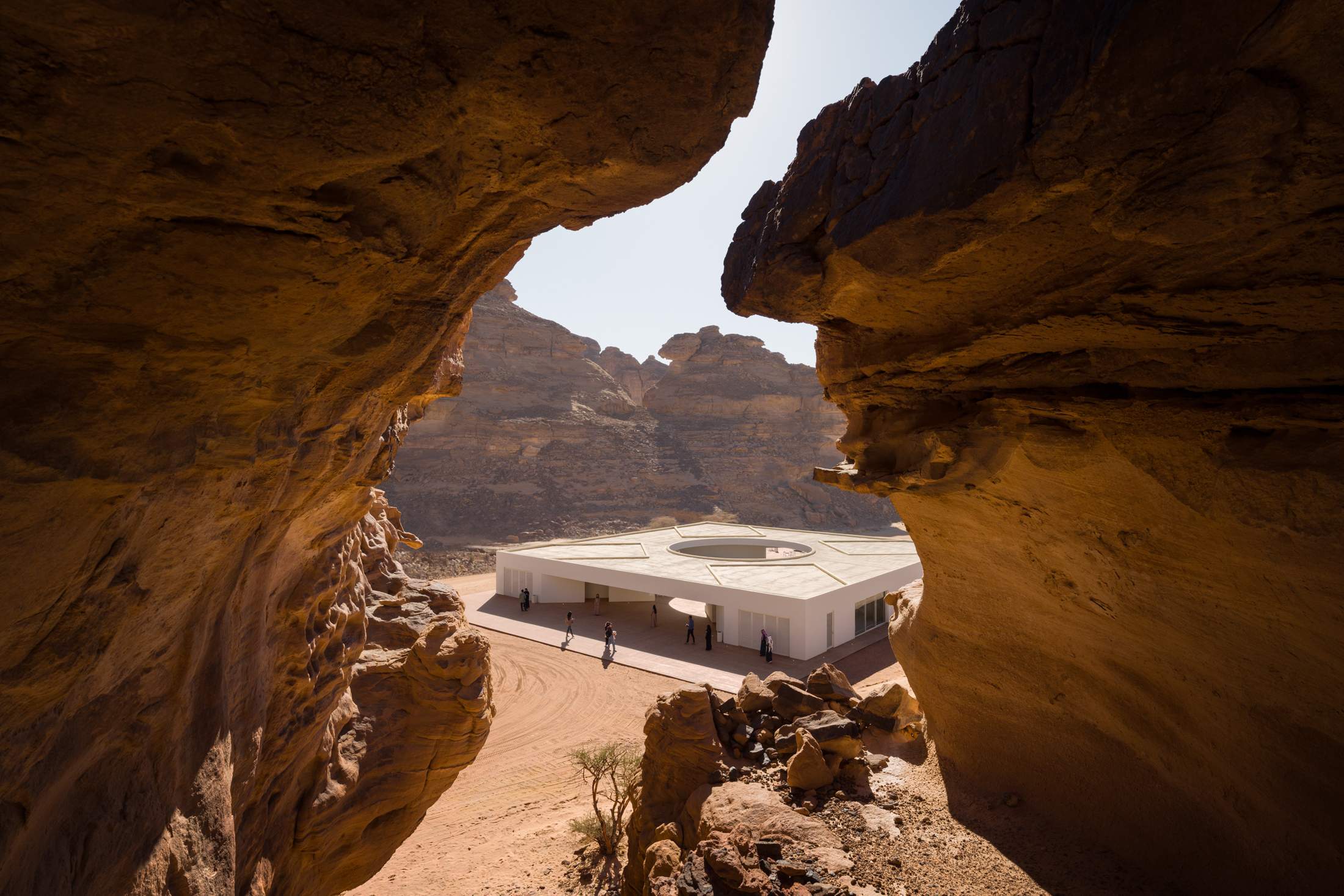

Located at the end of a narrow canyon, this year’s structure is set between rock formations, with views of the surroundings framed by apertures in the space. It’s a design outcome ensuring that this temporary pavilion makes the most of a permanent landscape, all thanks to a series of design moves trialled over a number of years.
For more on design in Alula, turn to our interview with Sabine Marcelis here.
interiors ––– milan
Inside knowledge
Founders of Milan-based Eligo Studio, Domenico Rocca and Alberto Nespoli (pictured, on right, with Rocca), met during the 2010 edition of Salone del Mobile. “Domenico was working in Berlin, I was in Amsterdam, yet we were both fans of the Italian artisan tradition,” says Nespoli.
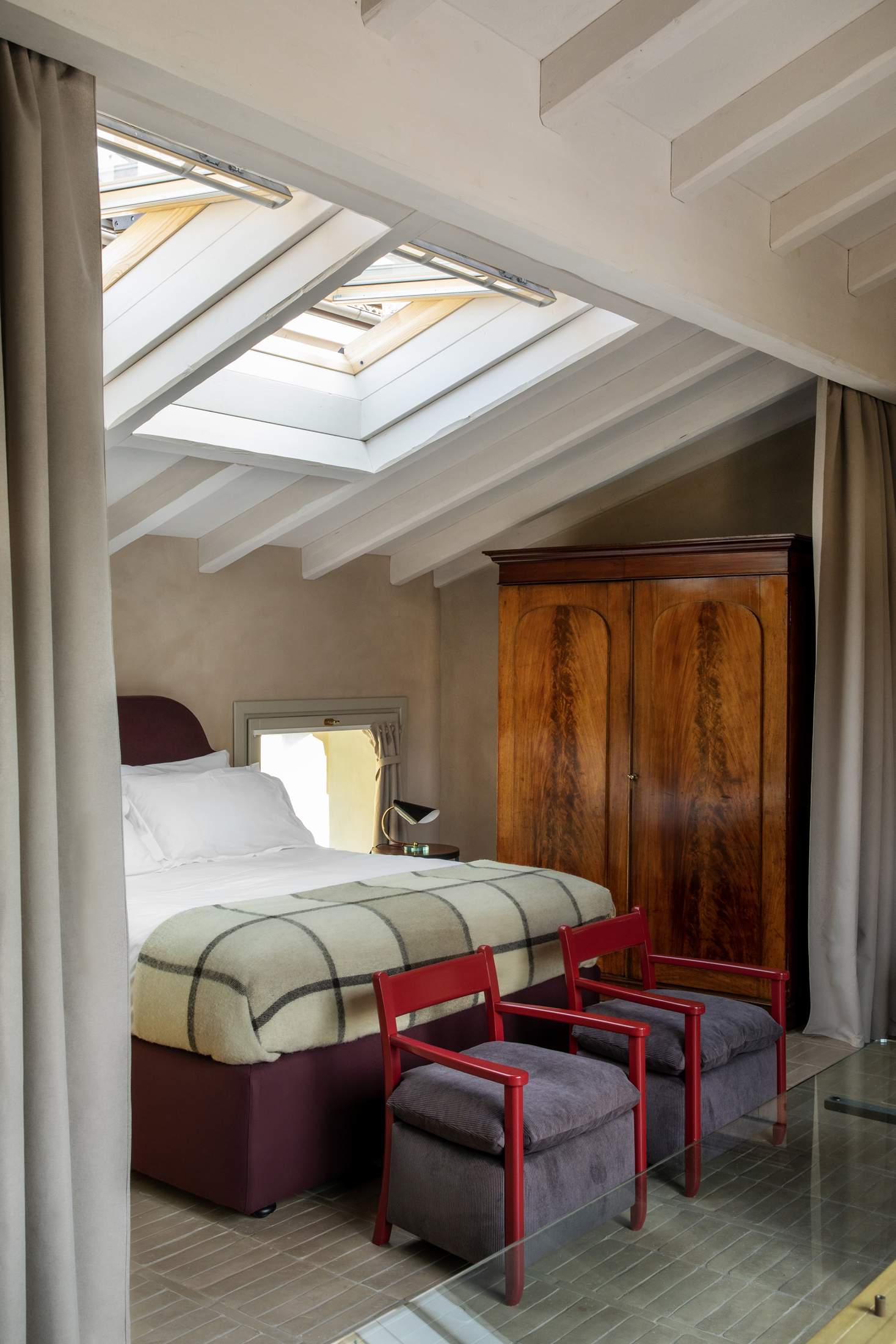
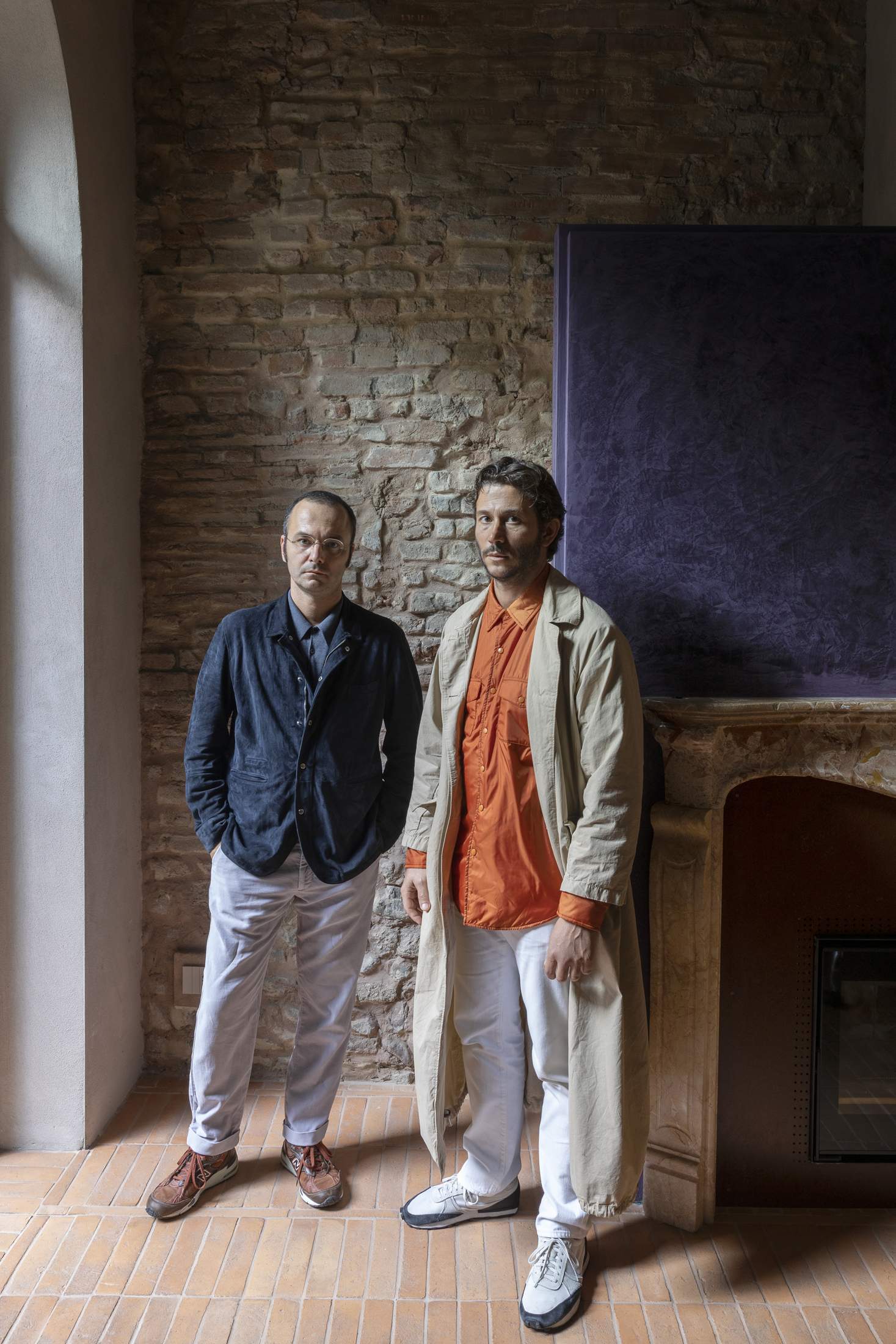
In 2012 the pair, graduates of Milan’s Polytechnic University, created a company specialising in interior design as well as a range of furnishings that are often incorporated into commissions. “Our work transmits a very Italian language that emphasises the aesthetic sensibilities associated with the masters of Italian design and makes it contemporary,” says Nespoli. “They were often working with artisan workshops and we want to preserve that.”
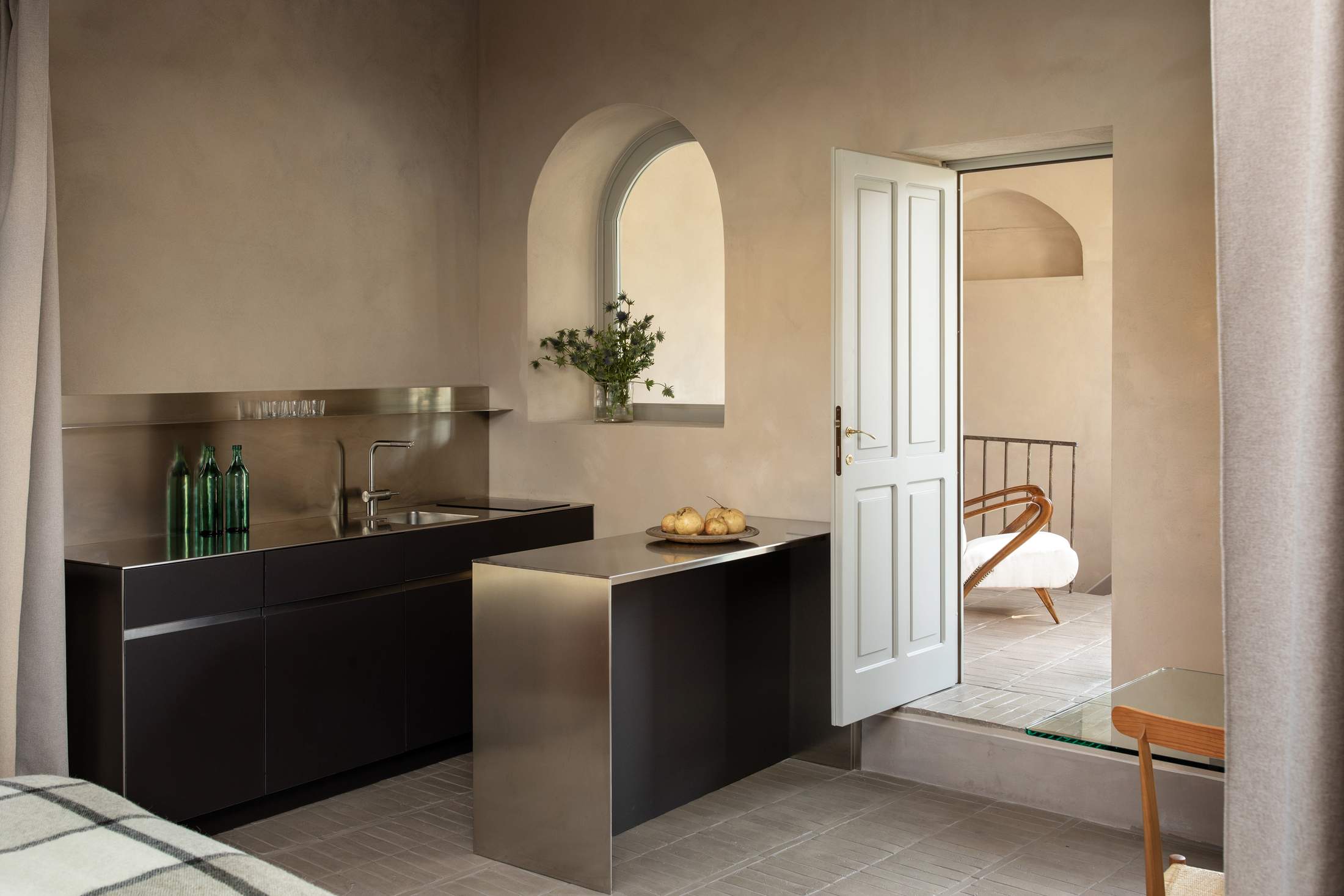
The result is a studio that produces custom furniture – including its Chiavari chair in cherry and beechwood, an update of a classic made by Ligurian craftsmen – and residential renovations such as a 1960s brutalist Milanese apartment and the boutique hotel Locanda La Concia in Reggio-Emilia. “We want to recognise the history of a place and enhance it,” says Nespoli. Those looking to commission a contemporary practice built on historical foundations would do well to tap the duo.
eligostudio.it
furniture ––– milan
Range of style
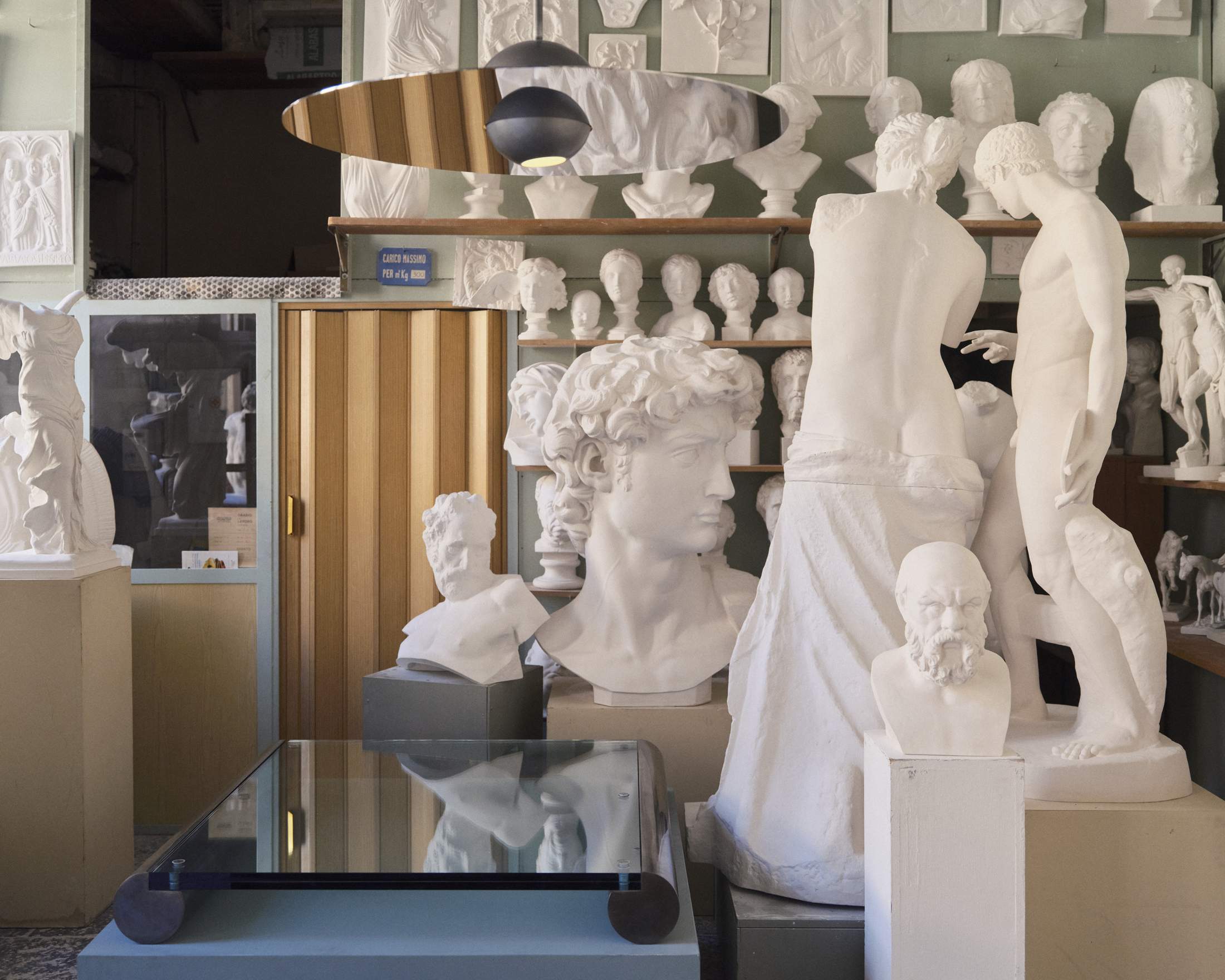
Emiliano Salci and Britt Moran, co-founders of Milanese design practice Dimorestudio, have a new furniture line to join their in-house Dimoremilano brand. Launched during Milan Design Week in April – where it was shown at a beautiful gypsum workshop – the Interni Venosta collection features seven initial pieces. The name is a reference to the inspiration of Milanese industrial designer Carla Venosta, who was particularly active in the 1970s and 1980s.
The works, which have been manufactured by Tuscany’s Fabbri Services, have some of the same angular touches as the pair’s previous designs, with a dominance of wood, steel and glass. The collection includes everything from a double bed and room divider to a beautiful table and chair set where the seats, when pushed under the table, appear as one cohesive piece. Billed by its founders as “simple, honest, concise”, Interni Venosta references everything from Donald Judd to Bauhaus. With our appetites whetted, we can expect more additions to the collection during 2024.
dimorestudio.eu
furniture ––– milan
Making history
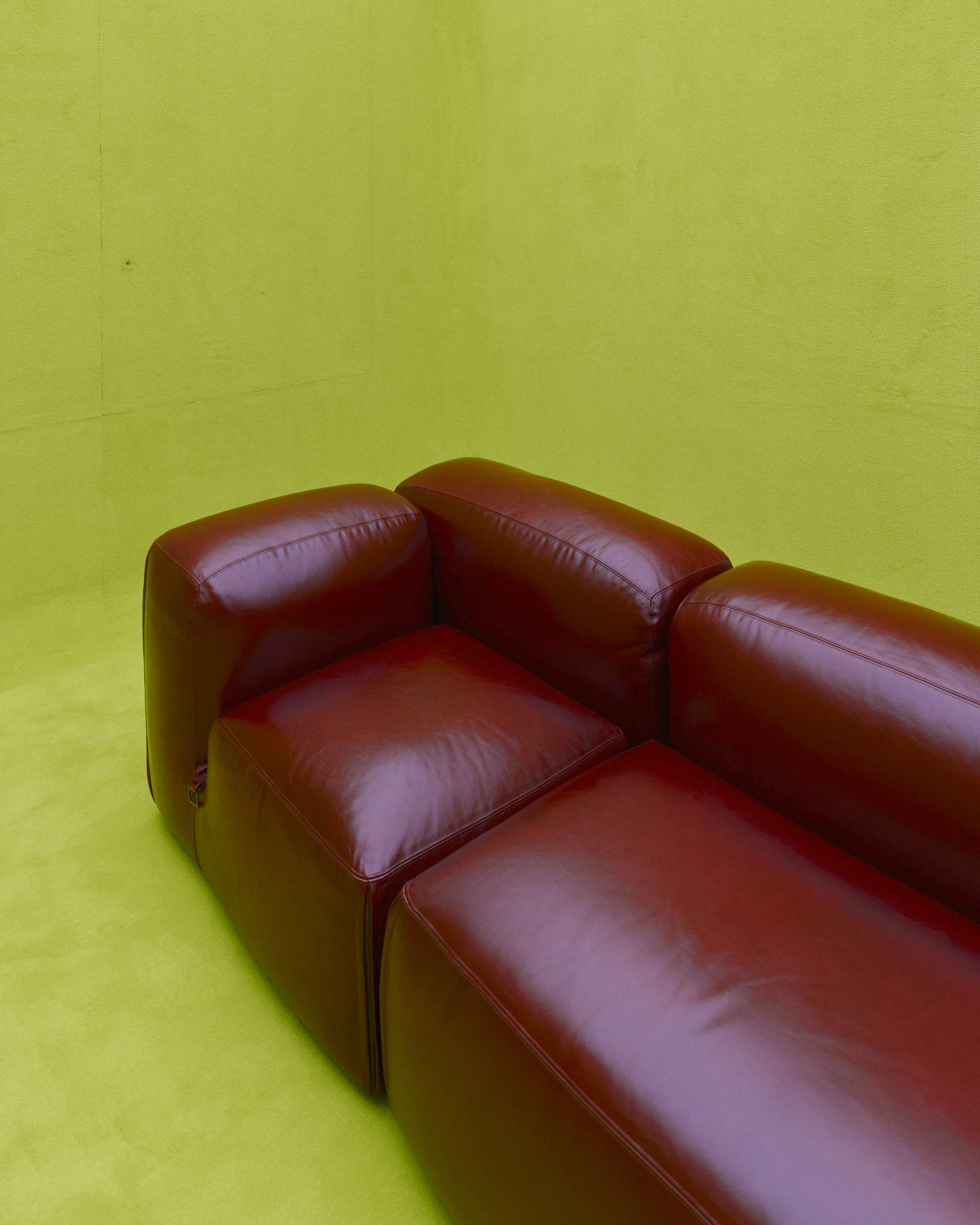
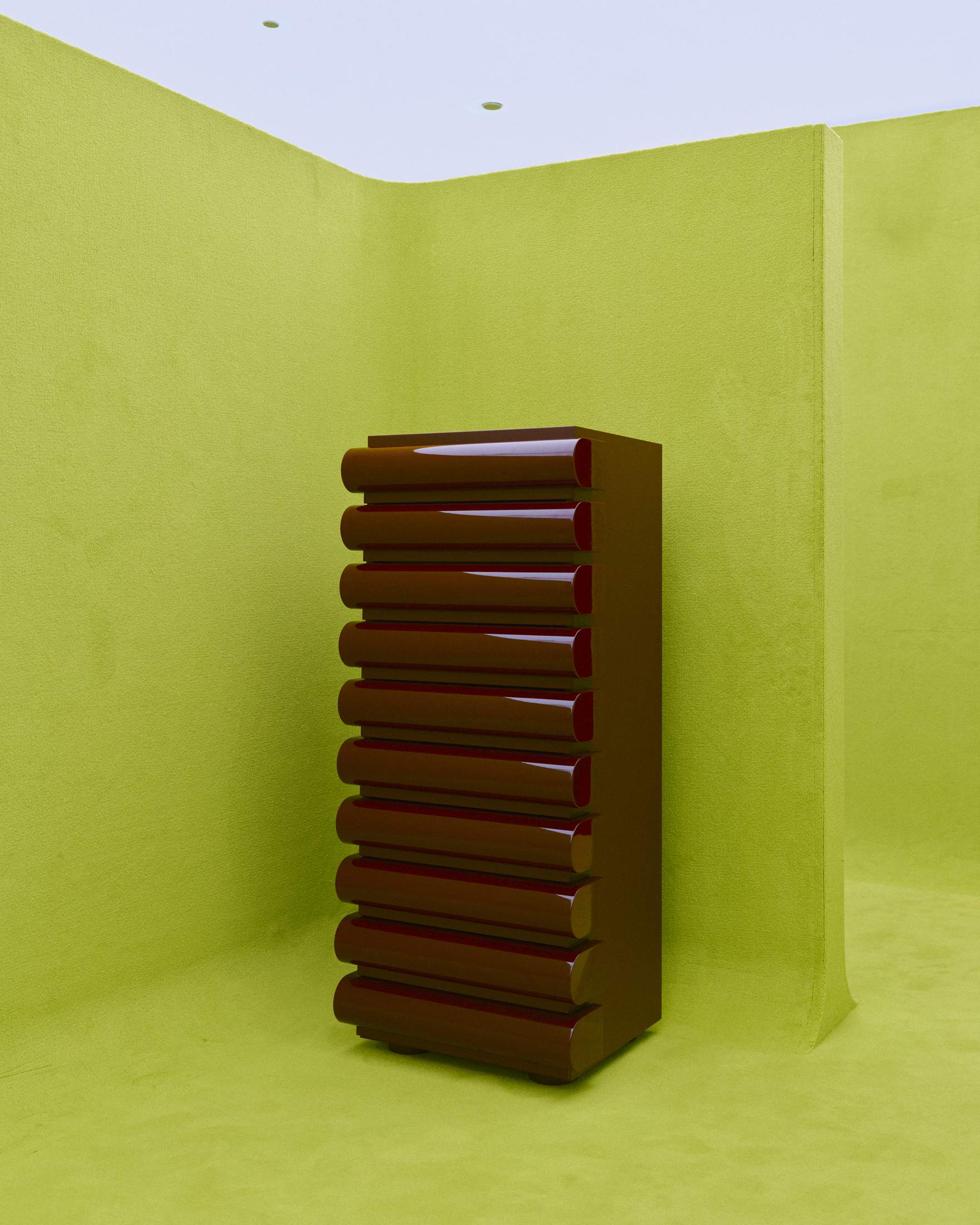
During Milan Design Week, Italian fashion house Gucci reissued five iconic furniture pieces in creative director Sabato de Sarno’s signature Rosso Ancora, a deep-red hue that signifies a new chapter in the Florentine brand’s history.
Set against a bright-green backdrop by Spanish architect Guillermo Santomà, the pieces included a Mario Bellini Le Mura couch for Tacchini from the 1970s and the Storet chest of drawers by Nanda Vigo, conceived for Acerbis in 1994.
An impressive blend of recognisable names in conversation with some of the country’s most notable furniture manufacturers, this is the Italian design scene at its most scintillating.
gucci.com
For more on Salone del Mobile, turn to page 138.
exhibitions ––– melbourne
Q&A: Ella Saddington
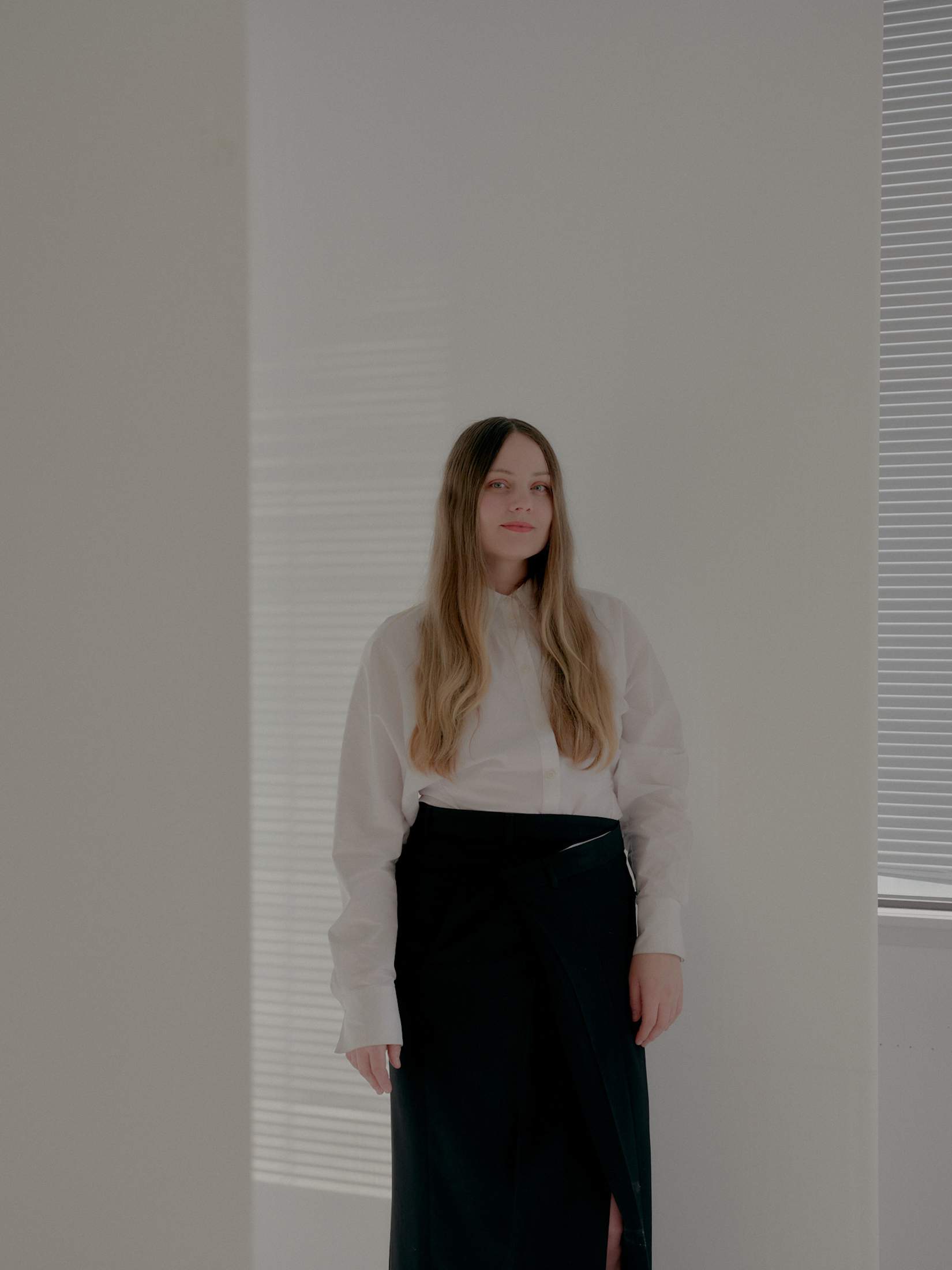
Ella Saddington is a Melbourne-based multi-disciplinary designer and curator of the Material Matters exhibition at Melbourne Design Week. The showcase aims to bring together designers to consider how they might better use materials to build a more sustainable world.
designweek.melbourne
What’s the end goal for ‘Material Matters’?
We are looking at how we might integrate the materials presented here into a commercial solution so that we can start thinking about real-world applications, rather than showcasing the material in a static exhibition.
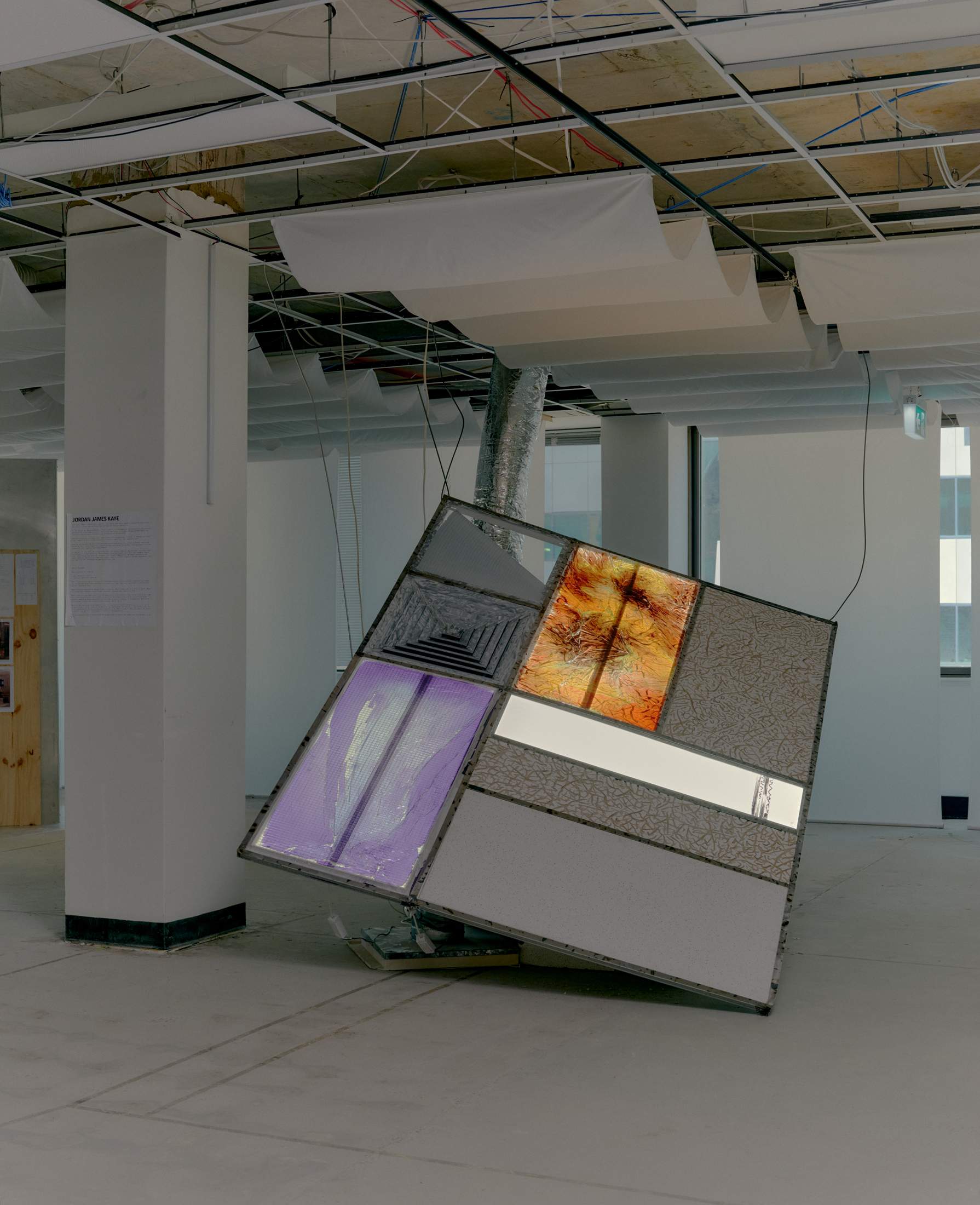
How do you strike a balance between presenting research and presenting finalised material solutions?
This show is about bringing designers together to share their wins but also their failures. A lot of the practices are in the early stages of innovation but then there are also plenty of market-ready solutions.
What are some of the highlights from the show?
There’s a secondary school programme that has created bio-based polymers out of coffee grounds. There’s also a large, structurally insulated panel system made from hemp and a textile-recovery company that has created solutions out of its waste streams, which it’s supplying to manufacturers in the area.
manufacturing ––– italy
Feet of clay
Lombardy has long been home to brick and tile makers, thanks to the clay soils of the Po floodplain. Terracotta tilemaker Fornace Brioni has, since 1920, been using clay to make its wares. Now under the direction of a fourth generation, Alessio and Alberto Brioni, the firm is upping its design credentials.
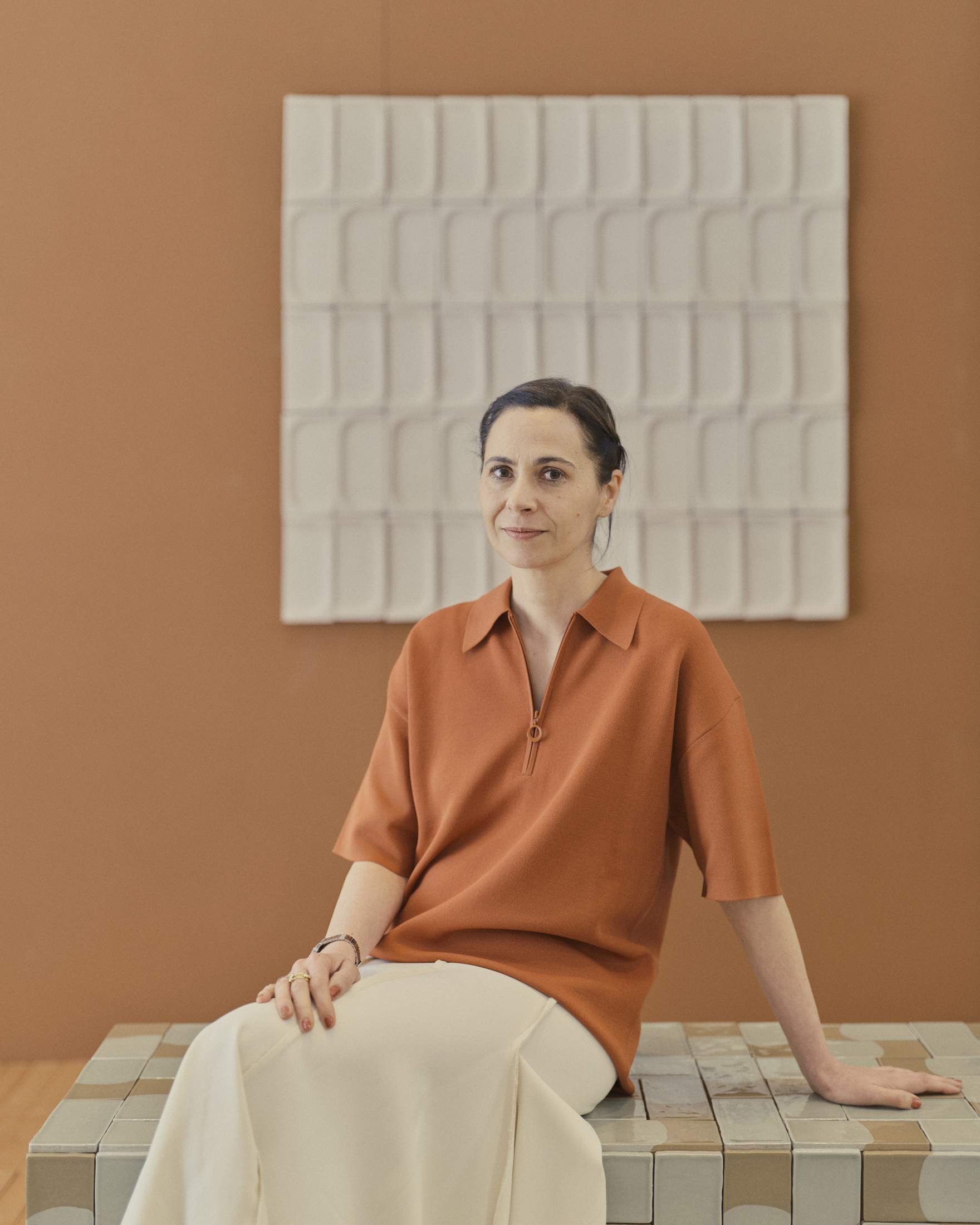

This year it has produced two new products. The first, in partnership with architecture firm Snøhetta, is a wall-tile system called Void. The design aims to reduce the amount of material used in production. The result? A scalloped, rather than flat, surface that casts gentle shadows as light moves across it. It’s a poetic product that complements the contribution of designer Cristina Celestino (pictured), who has created Fluviale, a hand-painted tile in blue-green and earthy hues, in partnership with Fornace Brioni. “The brushstrokes compose a pattern,” says Celestino. “It celebrates the movement that animates the plant world beneath the water’s surface.”
Both products are a reminder that there are always new ways of looking at classics – even the terracotta tile.
fornacebrioni.it
homeware ––– japan
Stuff of dreams
The taima-fu textile holds a sacred place in Japanese culture. A natural fine hemp, it has long been used for Shinto priests’ garments. Now, with the launch of Majotae 9490, it’s set to be a staple in the bedroom.
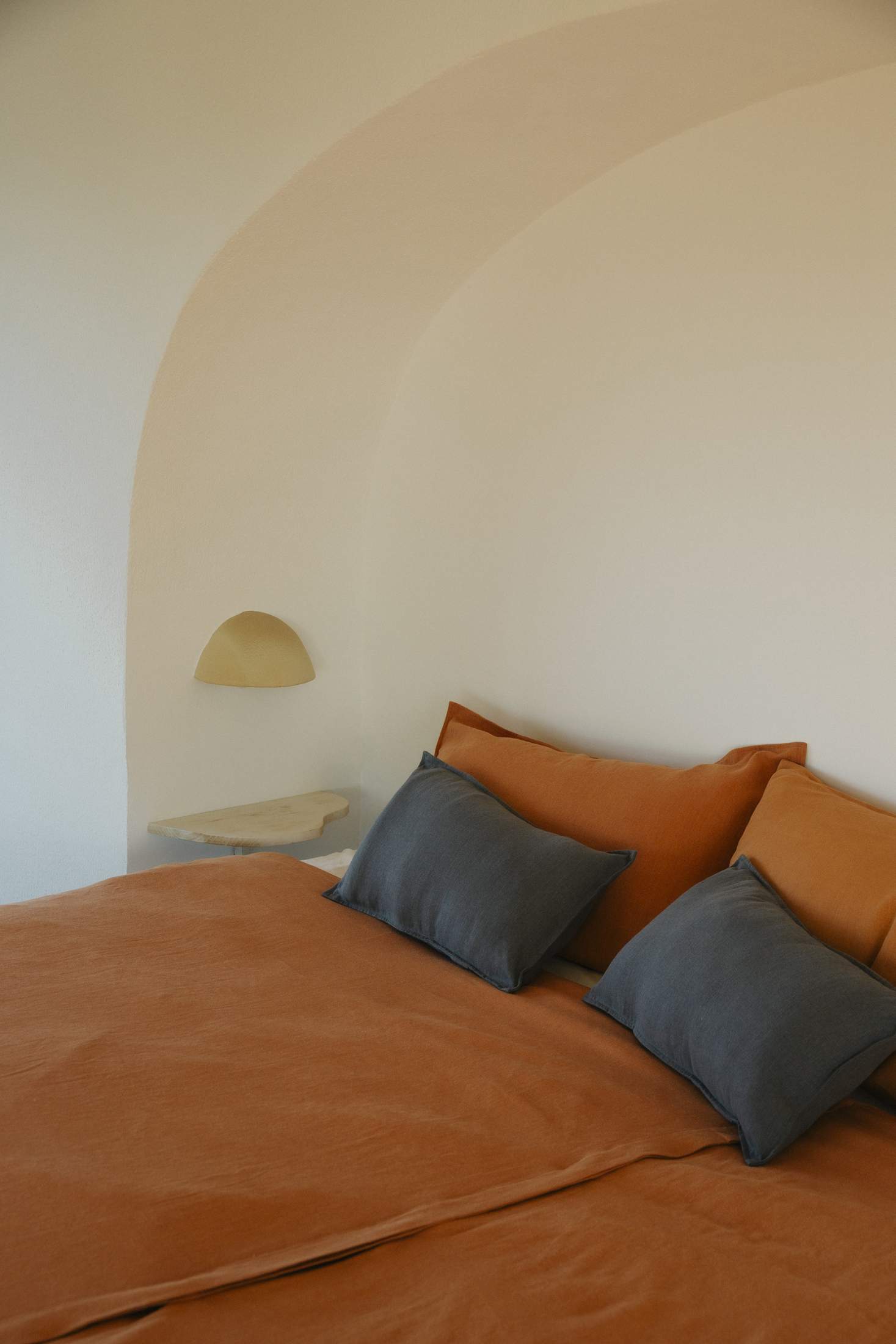
The new brand, an offshoot of Tokyo-based hemp business Majotae, has designed a range of sheets, duvet covers and pillow slips in collaboration with Teruhiro Yanagihara Studio, an interdisciplinary practice based between Kobe and Arles. Together, they developed new weaving technology to create a smoother and softer take on the original taima-fu textile, while still maintaining its thermo-regulating, antibacterial and odour-resistant properties.
The outcome is a luxurious set of bedding that will make it appealing to go to bed early every night, which is appropriate given that the “9490” number featured in the brand’s name nods to the average number of sleeps in a person’s lifetime.
majotae9490.com


